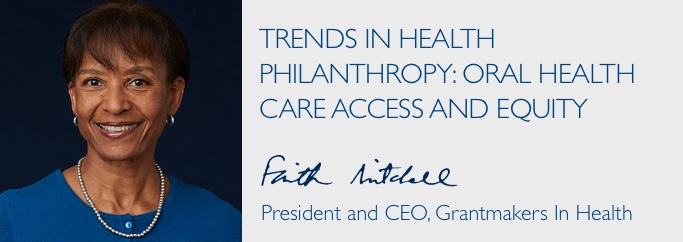
We should not have to make the case for oral health programming, but the reality is that the health effects of oral health disparities are not widely recognized—despite the fact that these disparities continue to be persistent and pervasive. It still comes as a surprise to many that poor oral health outcomes cannot only cause pain, but are also potentially life-threatening, through correlations to heart disease, premature birth, and low birth weight, arthritis, and cancers of the head and neck. Additionally, they can negatively affect attitudes towards personal appearance, social and emotional well-being, children’s academic success, and employability. Millions of Americans are at risk for these consequences because prohibitive costs and increasing oral health provider shortages limit their access to quality oral health care. Yet it does not have to be this way: oral health disease and conditions are largely preventable and highly treatable, especially when identified and addressed early.
In April, GIH and the Funders Oral Health Policy Group (FOHPG)—with support from the W.K. Kellogg Foundation—cosponsored “Putting Your Money Where Your Mouth Is: The Case for Funding Oral Health Programming,” in Memphis, Tennessee. The meeting affirmed the value of oral health programming as a health investment and highlighted successful strategies for advancing oral health. There is a growing interest among FOHPG’s members in recognizing oral health as an equity issue and, accordingly, investing in more systemic approaches that reduce inequities at the policy and systems levels. The value of this approach was confirmed by several of the presentations. Because the risk of poor oral health outcomes is greatest in the racial/ethnic, age, income, geographic, and special health care needs populations that experience other health disparities, insights from these presentations also applied to broader health equity interventions.
For example, the California Pan-Ethnic Health Network, an organization advocating for the health needs of communities of color in California, successfully expanded access to routine and specialized dental services by advocating for the passage of the California Healthcare, Research and Prevention Tobacco Tax Act (Proposition 56), and championing the restoration of full dental benefits for adults enrolled in California’s Medi-Cal (Medicaid) program. Once passed, Proposition 56 increased funding for dental providers serving the Medi-Cal population by roughly 40 percent and significantly increased reimbursements for all Medi-Cal providers, via new taxes on tobacco products.
The National Indian Health Board (NIHB) addressed policy and system change by advocating for an expanded oral health workforce. For more than a decade, NIHB’s Tribal Oral Health Initiative has trained and placed dental therapists in underserved, often rural, communities to expand access to services. Dental therapists are mid-level oral health care practitioners who provide routine preventative and restorative care. The dental therapy recruitment model in tribal communities has increased career opportunities for individuals that are local representative and equipped to support culturally appropriate care. Today, since the first domestic program in Alaska, dental therapists are authorized to practice in several states, while additional states and tribal governments are in the process of exploring their authorization with varying educational, licensure, and scope of practice parameters.
Looking ahead, GIH’s programming—including the upcoming annual conference–will continue to explore philanthropy’s role in addressing oral health in the larger context of health equity. Future topics will include further exploration of funders’ roles in policy and systems-change advocacy; holistic, community-centered strategies to address oral health disparities; and the role of locally representative workforces in improving care for affected populations. This work builds on our past programming, which focused on barriers to access and equity and the historical separation of oral health care from traditional primary care.
(For more information about FOHPG, I recommend “A Grantmaker Affinity Group Informs the Field, Inspires Innovation, and Ignites Action.”)

